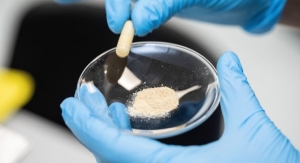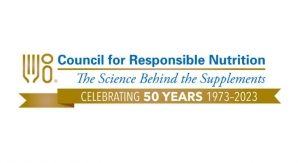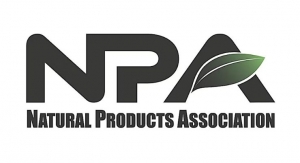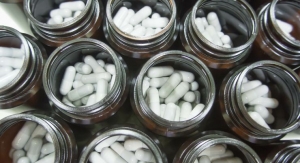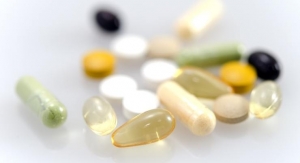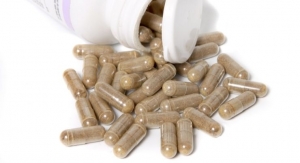Todd Harrison, Ashley Saba & Michelle Jackson , Venable09.08.16
The U.S. Food and Drug Administration released a long-awaited second version of its draft guidance on New Dietary Ingredients (NDIs) on Aug. 11. The draft guidance, “Dietary Supplements: New Dietary Ingredient Notification and Related Issues,” amends and replaces the original draft guidance published in 2011.
The goal of the new draft guidance is to improve the rate of compliance with the NDI requirement and the quality of submissions. The differences, however, are largely cosmetic and will make little difference to companies at the point of implementation. In the end, FDA has again created a document that is intended to hit the reset button to Oct. 15, 1994, which is not good for the industry and, quite frankly, will require resources of the agency that it simply does not possess. Indeed, the agency should ask itself if it can actually handle the tens of thousands of notifications that would likely result if this draft guidance was fully implemented by industry. Below we summarize some of the changes.
Marketing Evidence
According to the new draft guidance, evidence to support the marketing status of a dietary ingredient before the Dietary Supplement Health and Education Act of 1994 (DSHEA) took effect on Oct. 15, 1994, may include substances included in FDA’s Generally Recognized As Safe (GRAS) or food additive regulations. Companies may rely on those regulations to support pre-DHSEA status if the use of the substance in the regulation includes use as a nutrient supplement, if the regulation became effective before Oct. 15, 1994, and if the regulation contained identity specifications that the ingredient meets.
The draft guidance also provides examples of materials that would not be sufficient evidence, by themselves. For example, FDA is unlikely to consider publications, including the 1992 version of Herbs of Commerce, to be sufficient evidence of marketing status.
Authoritative List
Although FDA maintained its position that authoritative lists prepared by industry cannot serve as evidence of marketing status, FDA itself is prepared to create an authoritative list of pre-DSHEA (also known as “old” or “grandfathered”) dietary ingredients. In doing so, FDA is seeking information from industry to create its list. To be included on the agency’s list, the FDA will consider whether there is: “1) adequate documentation of marketing for use as or in a dietary supplement in the U.S. before October 15, 1994,” and “2) a precise description of the identity of the ingredient marketed.”
FDA did not explain a particular process for submitting information to be evaluated for the list; we hope more information will be forthcoming.
Manufacturing Processes
The draft guidance purports to reflect a somewhat more flexible stance on whether changes to the manufacturing process automatically convert a pre-DSHEA ingredient to an NDI. Consistent with the agency’s final guidance, “Assessing the Effects of Significant Manufacturing Process Changes, Including Emerging Technologies, on the Safety and Regulatory Status of Food Ingredients and Food Contact Substances, Including Food Ingredients that are Color Additives,” published in 2014, manufacturing changes that “alter the physicochemical structure or properties, purity and impurities, or biological properties (such as bioavailability or toxicity) of the ingredient will result in an NDI.”
Using this standard, the agency indicated that using a different part of a plant would create an NDI and that solution in water or tincture may change the composition of a pre-DSHEA dietary ingredient enough to make it an NDI for which a notification is required. However, FDA also recognized that if the manufacturing change does not alter the identity of the ingredient as described above, the regulatory status of the ingredient does not change.
In addition, the federal Food, Drug, and Cosmetic Act (FDCA) provides that an NDI notification is not required for an ingredient that has been present in the food supply as an article used for food without chemical alteration. The draft guidance elaborates on the types of manufacturing processes that do not “chemically alter” a food present in the food supply such that an NDI notification would be required. Specifically, from the agency’s perspective, a process that “involves an ingredient composed of one single raw material, or derived from a single raw material using a manufacturing process that involves only physical steps (e.g., water extraction and condensation); and does not involve attempts to selectively increase the concentration of particular active ingredients or cause a chemical reaction (other than esterification) that would modify the covalent bonds of any substance in the original material” would generally not chemically alter the food.
However, the new draft guidance retains the statement from the 2011 version of the draft guidance that changing a fermentation medium from the one used to make conventional foods in the food supply is an example of a process that chemically alters an article of food present in the food supply. The draft guidance invites industry to arrange pre-notification meetings with FDA to discuss specific manufacturing processes that, based on scientific evidence, do not chemically alter the food.
History of Use in Conventional Food
The draft guidance emphasizes that to be considered “present in the food supply” (such that an NDI notification is not required), the article must have been used in conventional food or a conventional food ingredient—not in a dietary supplement. The agency reasons that less safety information is available about substances used in dietary supplements as opposed to conventional food, as dietary supplements are consumed by a narrower segment of the population. In addition, the agency believes that historical use in dietary substances alone is insufficient because conventional foods have more demanding safety standards for ingredients.
Submission Information
In furtherance of the agency’s stated goal to improve submission quality, the draft guidance attempts to clarify complex submission issues. Some of the procedural topics of interest are:
Troubling, Untouched Recommendations
Perhaps equally as important are the unchanged aspects of the draft guidance. In the new draft guidance, FDA continues to limit the definition of amino acid to “an alpha-amino carboxylic acid used as a constituent of proteins or peptides.” Additionally, although the draft guidance provides more information about synthetic ingredients generally, it also reiterates the agency’s previous position that synthetic botanicals, categorically, are not dietary ingredients.
FDA is accepting comments on the new draft guidance beginning Aug. 12 for a period of 60 days. See the Federal Register notice, available here: http://bit.ly/2bhzH7n.
Todd Harrison
Venable
Todd Harrison is partner with Venable, which is located in Washington, D.C. He advises food and drug companies on a variety of FDA and FTC matters, with an emphasis on dietary supplement, functional food, biotech, legislative, adulteration, labeling and advertising issues. He can be reached at 575 7th St. NW, Washington, D.C. 20004, Tel: 202-344-4724; E-mail: taharrison@venable.com.
Ashley Saba
As a member of the firm’s Regulatory Practice, Ms. Saba advises clients on a variety of FDA and FTC regulatory matters, including advertising practices, manufacturing compliance, safety issues, labeling compliance, and other enforcement matters.
Michelle Jackson
Michelle Jackson’s practice is focused on regulatory counseling concerning the development, formulation, manufacture, distribution and promotion of foods, dietary supplements, drugs, medical devices and cosmetics.
The goal of the new draft guidance is to improve the rate of compliance with the NDI requirement and the quality of submissions. The differences, however, are largely cosmetic and will make little difference to companies at the point of implementation. In the end, FDA has again created a document that is intended to hit the reset button to Oct. 15, 1994, which is not good for the industry and, quite frankly, will require resources of the agency that it simply does not possess. Indeed, the agency should ask itself if it can actually handle the tens of thousands of notifications that would likely result if this draft guidance was fully implemented by industry. Below we summarize some of the changes.
Marketing Evidence
According to the new draft guidance, evidence to support the marketing status of a dietary ingredient before the Dietary Supplement Health and Education Act of 1994 (DSHEA) took effect on Oct. 15, 1994, may include substances included in FDA’s Generally Recognized As Safe (GRAS) or food additive regulations. Companies may rely on those regulations to support pre-DHSEA status if the use of the substance in the regulation includes use as a nutrient supplement, if the regulation became effective before Oct. 15, 1994, and if the regulation contained identity specifications that the ingredient meets.
The draft guidance also provides examples of materials that would not be sufficient evidence, by themselves. For example, FDA is unlikely to consider publications, including the 1992 version of Herbs of Commerce, to be sufficient evidence of marketing status.
Authoritative List
Although FDA maintained its position that authoritative lists prepared by industry cannot serve as evidence of marketing status, FDA itself is prepared to create an authoritative list of pre-DSHEA (also known as “old” or “grandfathered”) dietary ingredients. In doing so, FDA is seeking information from industry to create its list. To be included on the agency’s list, the FDA will consider whether there is: “1) adequate documentation of marketing for use as or in a dietary supplement in the U.S. before October 15, 1994,” and “2) a precise description of the identity of the ingredient marketed.”
FDA did not explain a particular process for submitting information to be evaluated for the list; we hope more information will be forthcoming.
Manufacturing Processes
The draft guidance purports to reflect a somewhat more flexible stance on whether changes to the manufacturing process automatically convert a pre-DSHEA ingredient to an NDI. Consistent with the agency’s final guidance, “Assessing the Effects of Significant Manufacturing Process Changes, Including Emerging Technologies, on the Safety and Regulatory Status of Food Ingredients and Food Contact Substances, Including Food Ingredients that are Color Additives,” published in 2014, manufacturing changes that “alter the physicochemical structure or properties, purity and impurities, or biological properties (such as bioavailability or toxicity) of the ingredient will result in an NDI.”
Using this standard, the agency indicated that using a different part of a plant would create an NDI and that solution in water or tincture may change the composition of a pre-DSHEA dietary ingredient enough to make it an NDI for which a notification is required. However, FDA also recognized that if the manufacturing change does not alter the identity of the ingredient as described above, the regulatory status of the ingredient does not change.
In addition, the federal Food, Drug, and Cosmetic Act (FDCA) provides that an NDI notification is not required for an ingredient that has been present in the food supply as an article used for food without chemical alteration. The draft guidance elaborates on the types of manufacturing processes that do not “chemically alter” a food present in the food supply such that an NDI notification would be required. Specifically, from the agency’s perspective, a process that “involves an ingredient composed of one single raw material, or derived from a single raw material using a manufacturing process that involves only physical steps (e.g., water extraction and condensation); and does not involve attempts to selectively increase the concentration of particular active ingredients or cause a chemical reaction (other than esterification) that would modify the covalent bonds of any substance in the original material” would generally not chemically alter the food.
However, the new draft guidance retains the statement from the 2011 version of the draft guidance that changing a fermentation medium from the one used to make conventional foods in the food supply is an example of a process that chemically alters an article of food present in the food supply. The draft guidance invites industry to arrange pre-notification meetings with FDA to discuss specific manufacturing processes that, based on scientific evidence, do not chemically alter the food.
History of Use in Conventional Food
The draft guidance emphasizes that to be considered “present in the food supply” (such that an NDI notification is not required), the article must have been used in conventional food or a conventional food ingredient—not in a dietary supplement. The agency reasons that less safety information is available about substances used in dietary supplements as opposed to conventional food, as dietary supplements are consumed by a narrower segment of the population. In addition, the agency believes that historical use in dietary substances alone is insufficient because conventional foods have more demanding safety standards for ingredients.
Submission Information
In furtherance of the agency’s stated goal to improve submission quality, the draft guidance attempts to clarify complex submission issues. Some of the procedural topics of interest are:
- Submitting a single NDI notification that contains safety data for a range of conditions for multiple dietary supplements;
- Creating NDI master files;
- Submitting a new NDI notification for a different dietary supplement;
- Relying on data from another NDI notification or NDI master file; and
- Distinguishing when to submit separate notifications for dietary supplements containing the same NDI vs. a single notification.
Troubling, Untouched Recommendations
Perhaps equally as important are the unchanged aspects of the draft guidance. In the new draft guidance, FDA continues to limit the definition of amino acid to “an alpha-amino carboxylic acid used as a constituent of proteins or peptides.” Additionally, although the draft guidance provides more information about synthetic ingredients generally, it also reiterates the agency’s previous position that synthetic botanicals, categorically, are not dietary ingredients.
FDA is accepting comments on the new draft guidance beginning Aug. 12 for a period of 60 days. See the Federal Register notice, available here: http://bit.ly/2bhzH7n.
Todd Harrison
Venable
Todd Harrison is partner with Venable, which is located in Washington, D.C. He advises food and drug companies on a variety of FDA and FTC matters, with an emphasis on dietary supplement, functional food, biotech, legislative, adulteration, labeling and advertising issues. He can be reached at 575 7th St. NW, Washington, D.C. 20004, Tel: 202-344-4724; E-mail: taharrison@venable.com.
Ashley Saba
As a member of the firm’s Regulatory Practice, Ms. Saba advises clients on a variety of FDA and FTC regulatory matters, including advertising practices, manufacturing compliance, safety issues, labeling compliance, and other enforcement matters.
Michelle Jackson
Michelle Jackson’s practice is focused on regulatory counseling concerning the development, formulation, manufacture, distribution and promotion of foods, dietary supplements, drugs, medical devices and cosmetics.


